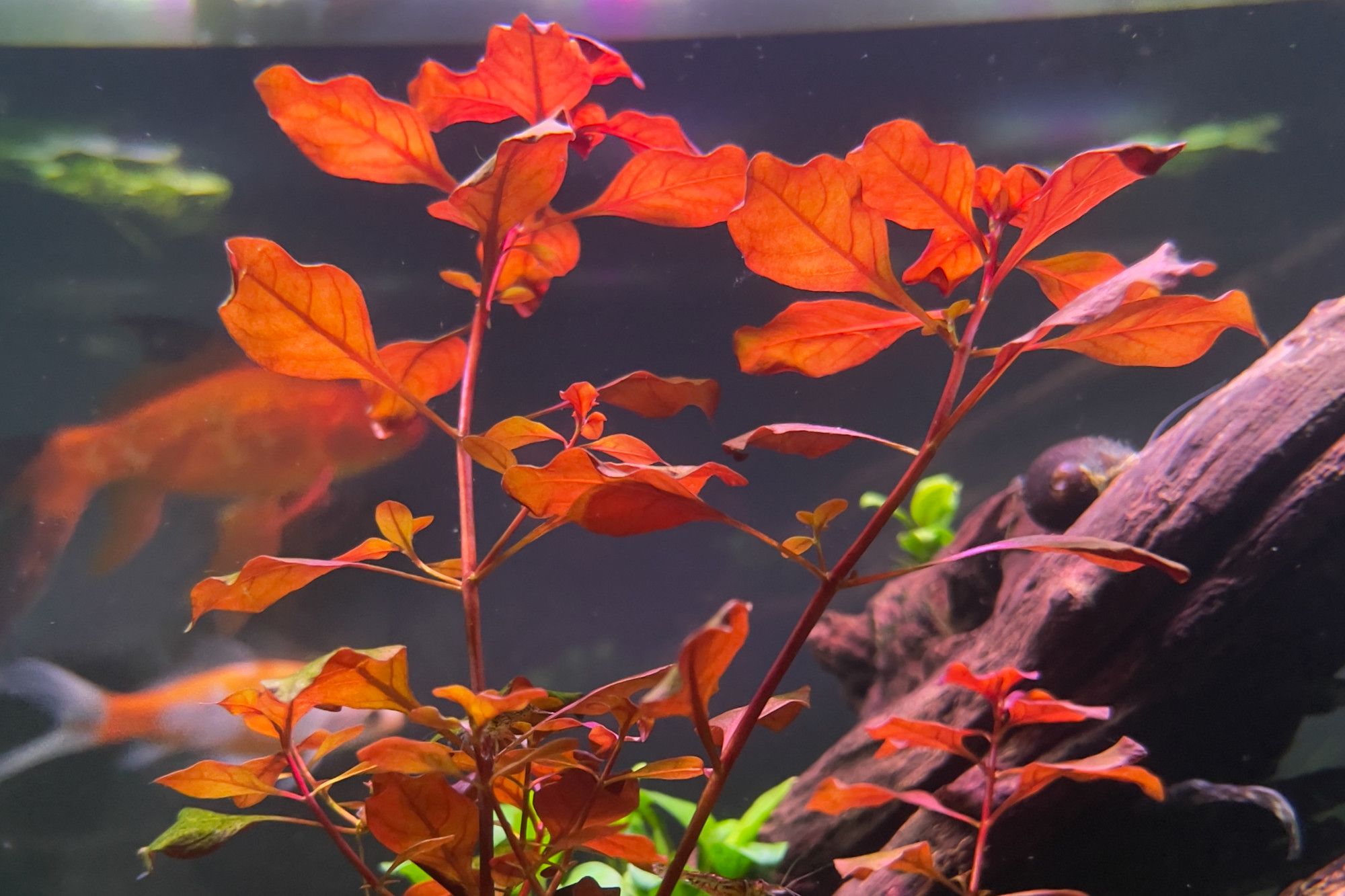General Information
Ludwigia sp. 'Super Red' (Ludwigia palustris) is a submersed and emersed stem plant that originates in Euroasia, North and Central America and can usually be found in wet to flooded areas like marshes.
Ludwigia Super Red is smaller and easy to grow in a red colour then its sibling Ludwigia Rubin. It grows very dens and can be easily propagated by cutting and planting its shoots. Ludwigia sp. 'Super Red' is suitable for all tanks and can be placed in the middle ground and background. Its leaves are elliptic in shape with a ruby (upper side) and a dark ruby (under side) color. In contrast to many other aquatic plants that can have red leaves, the red coloration is easier to achieve with Ludwigia Super Red. Even when only using medium lighting in your tank. It's therefore very well suited as a highlight plant for less experienced people.
It can grow from 10 to 30 cm tall. Since it has a fast growth rate, you need to make sure there is enough nutrients present in the water and the soil - otherwise the plant will decay.
The following sections give an in-depth overview on how to plant, grow and propagate the plant in your tank successfully.
How to plant Ludwigia sp. 'Super Red'
Ludwigia sp. 'Super Red' is a stem plant, which means it needs to be planted in soil. It is best placed deep into soil with the help of tweezers while making sure that at least 2-3 cm of the plant remain visible.
Where to place Ludwigia sp. 'Super Red'
Due to its medium size of maximum 30 cm, Ludwigia sp. 'Super Red' is best suited as a middle ground and background plant and can be used in all tanks from nano size upwards.
The step-by-step process to plant Ludwigia sp. 'Super Red'
- Before beginning, make sure the aquarium is not filled with water yet, but the soil is wet.
- Most likely the Ludwigia sp. 'Super Red' will arrive in an in-vitro container or cup. Carefully remove the plant from the container and wash the plant under fresh and unchlorinated water until all of the nutrient paste or gel is removed.
- Carefully break up the plant mass into small batches using your hands.
- Use tweezers to pick up each small batch by the roots at an angle of approximately 45°. Be careful not to squeeze the plant too tight, otherwise you might damage the roots.
- Now push the plant into the soil using the tweezers in a 45° angle until only the tip of the plant is coming out of the soil. It's better to plant the plant a little too deeply than too shallowly. Otherwise, it might float to the top before roots can attach properly.
- After pushing the plant into the soil, don't just pull the tweezers out. Instead, pull the tweezers out in a slow and wiggling motion in order not to pull the plant with you and disturb the soil to cover the plant.
How to grow Ludwigia sp. 'Super Red' fast
The overall growth-rate of Ludwigia sp. 'Super Red' is fast. There are, however, some things you can do to speed up the process further:
- Adding CO² to your tank: Low levels of CO² injection can be helpful for Ludwigia Super Red to achieve the red leaf color. Adding 20 to 40 mg/l of CO² to your tank might also accelerate its already fast growth even further and deepen the red color.
- Add nutrients to your tank: Nutrients are absolutely mandatory for growing a healthy Ludwigia Super Red. It's best to add substrate to the soil and fertilize regularly.
- Choose the right spot: Make sure to place Ludwigia Super Red in a spot with medium to high (but not very high) lighting.
How to propagate Ludwigia sp. 'Super Red'
Cut the plant stem minimum 3 cm from the top. Plant the stem according the steps mentioned in the "How to plant"-section.
Common problems with Ludwigia sp. 'Super Red'
- Yellow Leaves: In case the leaves on Ludwigia sp. 'Super Red' turn yellow, this is a sign for lack of nutrients in the water. We suggest to check the water parameters in order to determine which fertilizer to add.
- Melting Leaves: In case the leaves on Ludwigia sp. 'Super Red' seem to rot or melt, this might also be a sign for lack of nutrients in the water or soil. Other reasons could be too much or too little light. In these cases, it's best to measure your tank parameters and compare them to the data in the "plant characteristic" table in the top right of this page.
- Green leaves: From our experience the leaves stay green when the lighting is low to medium and/or the stem is too short. Younger plants will also tend to produce green leaves. The deep red color is best achieved with more mature plants under bright lighting
